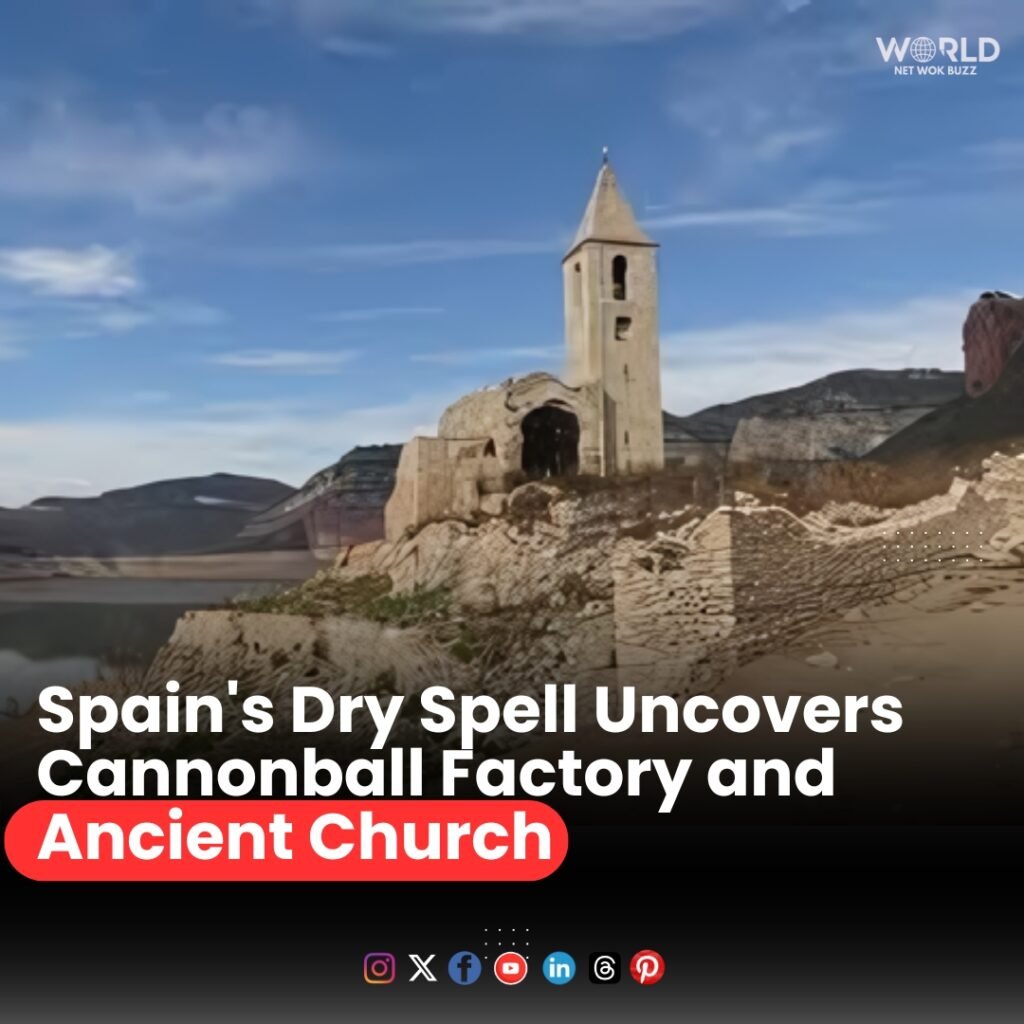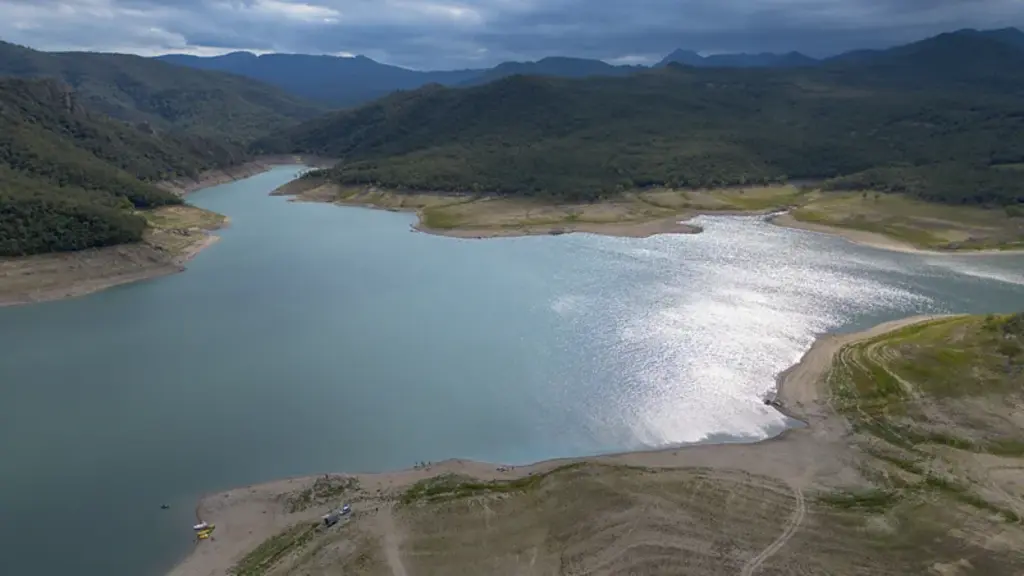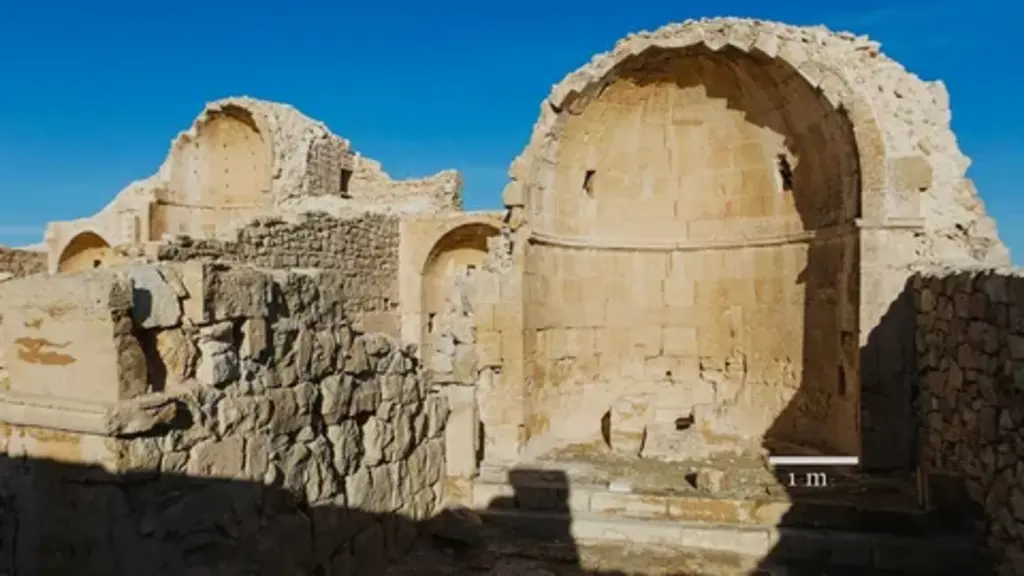Beneath the Surface: Spain's Hidden Treasures Revealed
A unique occurrence is taking place in the centre of Spain. Once a calm and beautiful body of water, a dried-up lake has receded to reveal a secret world from centuries ago. This surprising find has enthralled both residents and historians. The remains of an old church and a cannonball factory—two artifacts that convey a story of faith, industry, and history—were exposed when the floods receded. Recessing waters of a once-thriving lake in Spain have, in an unexpected turn of events, unearthed treasures buried for generations. An old cannonball factory and a historic church rose from the abyss when the lake dried up, offering an intriguing look into the rich history of the area. Locals and historians alike have been enthralled by this astounding find, which presents a rare chance to delve into the legacy and tales of a bygone era.

The Unveiling of History
The lake, a body of water that was once a dynamic feature of the landscape, is where the story starts. Over time, the lake started to dry up as a result of both natural and artificial reasons. Gradually, the once-bustling center of aquatic life gave way to a lonely stretch of land. The draining lake alarmed a lot of people because it was an indication of problems and changes in the ecosystem. But the retreat by the lake also provided an unanticipated gift: a peek into the past. The cannonball factory was the first building to show as the waters subsided. This factory, which dates back centuries, was originally an essential component of the defense system in the area. Despite being worn down over time, its walls still stand tall, demonstrating the skill and creativity of those who built it. It is almost possible to hear the clang of metal and the echoes of hammers as one walks inside the factory, where men previously struggled to make weapons that would safeguard their homeland. Another building started to take shape nearby amid the drying muck. This was an old church, a place of worship rather than an industrial relic. The church was a sharp contrast to the factory, with its crumbling bell tower and walls made of worn stone. It was formerly a peaceful gathering spot where people went to find comfort and direction. The locals were reminded of their rich cultural and religious background by the finding of the church, which made it especially meaningful.

A Journey Through Time
Investigating these recently discovered formations is similar to traveling through time. Every stone and fragment of rubble has a narrative to tell. The massive ovens and storage rooms of the cannonball factory hint at a period when the area was on high alert, bracing for possible invasions. Because of its advantageous location next to the lake, the factory would have had convenient access to water for transportation and cooling. On the other hand, there is a sense of peace in the church. Its exquisite yet understated design echoes the architectural motifs of the time. Inside, religious symbols and faded frescoes allude to the once-vibrant community that convened here. It’s simple to picture a packed church where people are raising their voices in song and prayer. Historians from the area have been diligently recording and conserving these locations. They have discovered implements and relics that shed further light on the day-to-day activities of the people who originally lived in this region. Every discovery, whether they are religious artifacts discovered in the chapel or the actual cannonballs, adds a new dimension to the narrative.
The Human Connection
The human connection that this discovery promotes is what really sets it apart. The appearance of these structures has inspired wonder and introspection in the neighborhood. For many, it’s a reminder of the tenacity and resourcefulness of their forebears. The church and factory serve as representations of human nature’s duality, which includes the ability to be both peaceful and conflictual. Students now have a concrete link to their past thanks to the inclusion of field trips to the location in the curriculum of nearby schools. People of all ages can learn about the past through guided tours, which promote continuity and a sense of pride. Additionally, travelers have been lured to the location by the exceptional chance to investigate a previously undiscovered period of history.

Challenges and Preservation
Although the finding is thrilling, there are a lot of obstacles to overcome. There is an urgent need for preservation efforts because the exposed structures are susceptible to the elements. To preserve and stabilize the site, local government officials, historians, and environmentalists are working together. This entails building safeguards, thoroughly recording the structures, and looking for financing for extended conservation initiatives. The lake’s own drying out serves as a reminder of the larger environmental problems the area is dealing with. A lot of work is being done to identify and address the causes of the lake’s deterioration. Studying water management techniques, addressing the effects of climate change, and looking into long-term solutions to protect the environment are all part of this.
A Glimpse into the Past
The chapel and cannonball factory that Spain’s dried-up lake exposed provide an intriguing look into the past. They serve as a reminder of the intricate ways that faith and industry coexisted throughout history. After being concealed for a considerable amount of time, these buildings now serve as silent reminders of the lives of our predecessors. We are reminded of time’s passing and the enduring character of human endeavor as we stroll through the factory and the church. The finding makes us think about how we fit into history, how much the stories of the past have shaped the present, and what kind of legacy we want to leave for the next generation. Ultimately, the community has benefited from the drying lake by having an opportunity to honor its history, rekindle ties to its past, and preserve the legends around the historic church and cannonball factory. This underground world’s profound reminder that history is constantly there and just waiting to be unearthed and recognized is potent.






